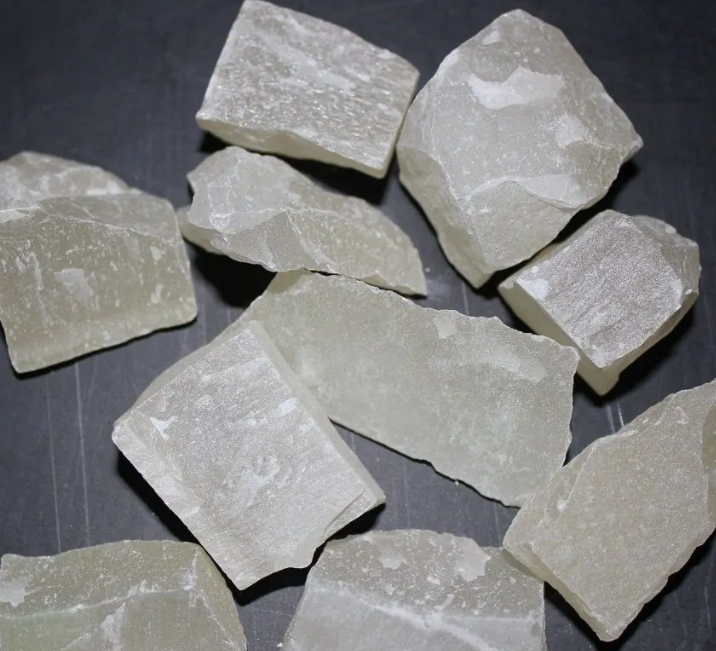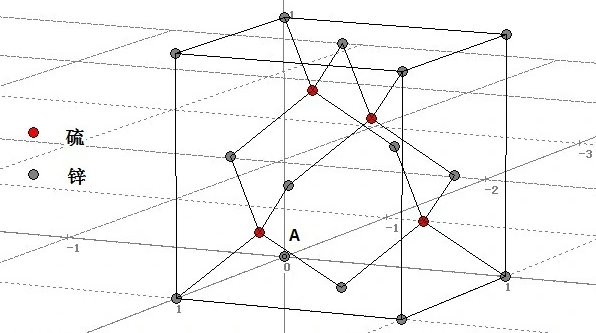Professional industry ceramic supplier, silicon nitride, silicon carbide, aluminum nitride and any other kinds of ceramics.
Zinc sulfide is an inorganic compound with a chemical formula of ZnS. It is a white or slightly yellow powder, and the color becomes darker when seen. It is stable in dry air, and when it is placed in humid air for a long time or contains moisture, it will gradually oxidize to zinc sulfate.

Zinc sulfide history
The study of zinc sulfide fluorescent materials has a history of more than 130 years since it was discovered by the French chemist Sidot in 1868. From the 1920s to the 1940s, the study of zinc sulfide materials has always attracted people's attention.
Physical and chemical properties
Physical properties
White or slightly yellow powder. It turns into crystals when burning in H2S gas. The α variant is a colorless hexagonal crystal with a density of 3.98g/cm3 and a melting point of 1700°C; the β variant is a colorless cubic crystal with a density of 4.102g/cm3, which is transformed into the α type at 1020°C. Exist in sphalerite. Insoluble in water, soluble in acid. See the sunlight dimmed.
Chemical properties
Zinc sulfide unit cell

It is converted into zinc sulfate in humid air for a long time. It is generally derived from the action of hydrogen sulfide and zinc salt solution. If a small amount of Cu, Mn, Ag is added as an activator in the crystalline ZnS, it can emit different colors of fluorescence after being illuminated. Used as analytical reagents, coatings, paints, white and opaque glass, filling rubber, plastics, and for preparing phosphors.
Overview of zinc sulfide ZnS
Zinc sulfide is a white to off-white or light yellow powder. The color becomes darker when exposed to light. It is stable in dry air. When stored in moist air for a long time or contains water, it will gradually oxidize to zinc sulfate. Soluble in dilute inorganic acid, soluble in alkali, insoluble in water. The relative density is 3.98 (α type), (d25) 4.102 (β type). It is irritating.
Application of zinc sulfide ZnS
Zinc sulfide is usually made from scrap and used for other purposes. Typical sources include smelters, slag and pickling liquor. It is also a by-product of ammonia synthesis from methane, in which zinc oxide is used to remove hydrogen sulfide impurities in natural gas.
High-purity crystalline zinc sulfide powder is an important basic material, which is widely used in high-tech fields such as civil, military, and aerospace. It is also an extremely important window material for medium and long wave far-infrared precision guidance and far-infrared imaging, especially in frontier technical fields such as national defense and military. The uses of zinc sulfide are as follows: Luminescent materials
Zinc sulfide, with a small amount of suitable activator, has a strong phosphorescence, and is currently used in various applications from cathode ray tubes to X-ray screens to emit light in dark products. When silver is used as the activator, the color produced is bright blue with a maximum of 450 nm. The use of manganese produces an orange-red color of about 590 nm. Copper can emit light for a long time and has the familiar dark green luminous effect. Copper-doped zinc sulfide ("ZnS+Cu") is also used in electroluminescent panels. It also shows phosphorescence due to impurities in blue or ultraviolet light.
Optical materials
Zinc sulfide is also used as an infrared optical material, which can transmit visible light wavelengths to a little over 12 microns. It can be used as the plane of the optical window or the shape of the lens. It is made of hydrogen sulfide gas and zinc vapor microchips and is sold as FLIR grade (front looking infrared), where zinc sulfide is in a creamy yellow, opaque form. When hot isostatic pressing (HIPed), the material can be transformed into a transparent water form called Cleartran (trademark). The early commercial form was sold in the form of Irtran-2, but this name is now obsolete.
pigment
Zinc sulfide is a common pigment, sometimes called sandstone. When combined with barium sulfate, zinc sulfide forms Lithopone.
catalyst
ZnS fine powder is an effective photocatalyst, which generates hydrogen from water under light. Sulfur vacancies can be introduced into ZnS during the synthesis process. This makes the white to yellow ZnS gradually turn into a brown powder, and enhance the photocatalytic activity through enhanced light absorption.
Zinc sulfide ZnS price
The price of zinc sulfide and zinc sulfide products will vary with random factors, such as the production cost of zinc sulfide and zinc sulfide products, transportation costs, international conditions, exchange rates and market demand for zinc sulfide and zinc sulfide products. Tanki New Materials Co., Ltd. aims to help various industries and chemical wholesalers find high-quality, low-cost nanomaterials and chemicals by providing a full set of customized services. If you are looking for zinc sulfide ZnS products, please feel free to send an inquiry to get the latest zinc sulfide ZnS product prices.
Suppliers of Zinc Sulfide ZnS
As a global supplier of zinc sulfide zinc sulfide products, Tanki New Materials Co., Ltd. has extensive experience in the performance, application and cost-effective manufacturing of advanced engineering materials. The company has successfully developed a series of powder materials (molybdenum disulfide, tungsten sulfide, bismuth sulfide, etc.) high-purity targets, functional ceramics and structural devices, and provides OEM services.
| Zinc Sulfide Properties | |
| Other Names | ZnS powder, zinc sulphide, zinc sulfide phosphor |
| CAS No. | 1314-98-3 |
| Compound Formula | ZnS |
| Molecular Weight | 97.45 |
| Appearance | White to off-white Powder |
| Melting Point | 1830 °C |
| Boiling Point | N/A |
| Density | 4.1 g/cm3 |
| Solubility in H2O | N/A |
| Poisson's Ratio | 0.28 |
| Specific Heat | 520 J/kg-K |
| Thermal Conductivity | 27 W/m-K |
| Thermal Expansion | 6.5 µm/m-K |
| Young's Modulus | 75 GPa |
| Zinc Sulfide Health & Safety Information | |
| Signal Word | N/A |
| Hazard Statements | N/A |
| Flash Point | N/A |
| Hazard Codes | N/A |
| Risk Codes | N/A |
| Safety Statements | N/A |
| RTECS Number | ZH5400000 |
| Transport Information | NONH for all modes of transport |
| WGK Germany | nwg |
